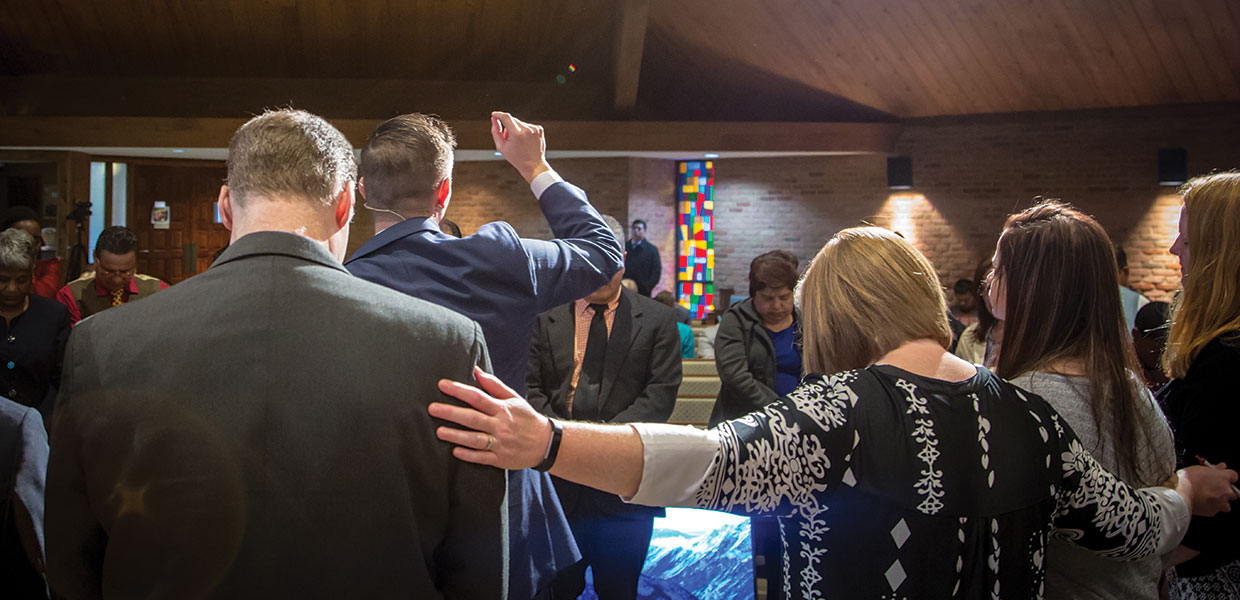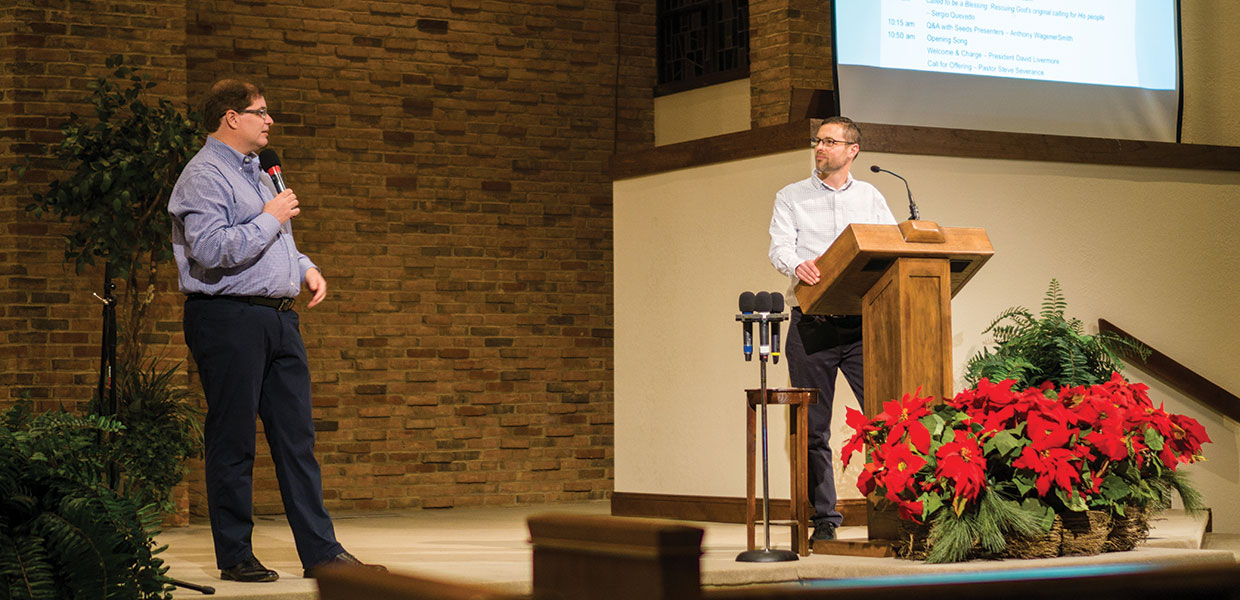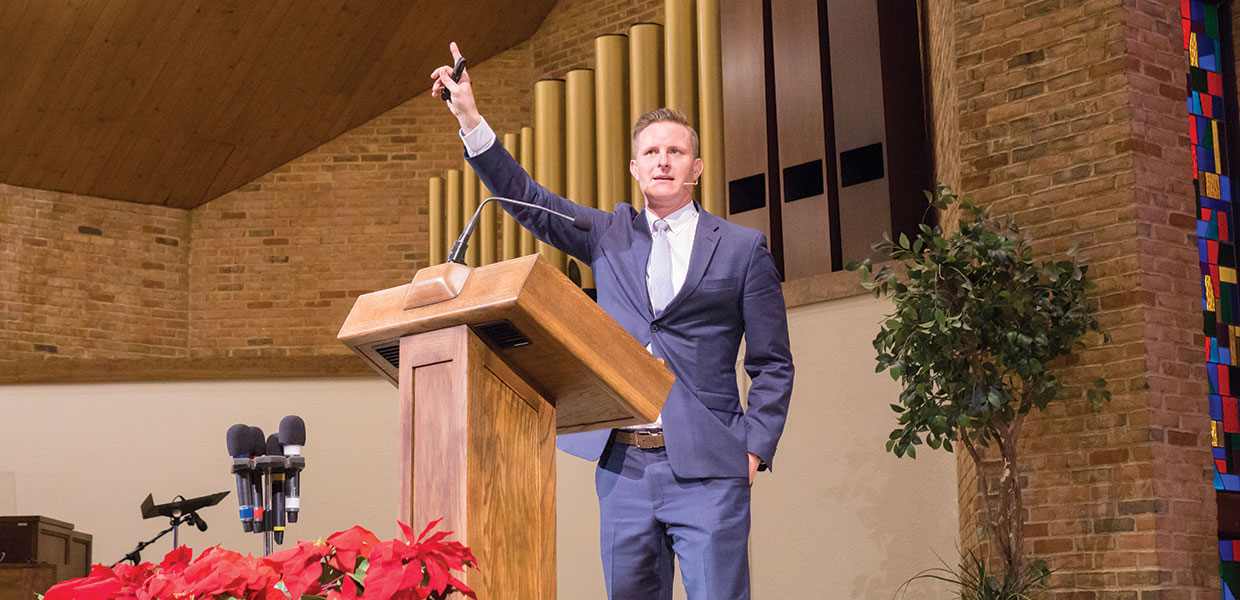
Shane Hochstetler

Shane Hochstetler

Shane Hochstetler
Every church that exists today is because of church planting, said Anthony WagenerSmith, associate director at the North American Division Evangelism Institute (NADEI). WagenerSmith was joined by pastors from around the Division at the SEEDS Conference in Birmingham, Alabama, February 9-10, 2018. Some of the visiting presenters included Sergio Quevedo from Boston, Massachusetts; Godfrey Miranda from Castle Rock, Colorado; and Richie Halversen from Clinton, Mississippi, among others. Each presenter shared their experience with church planting, and encouraged attendees to take a closer look at their own experience and how a church plant may have positively influenced their relationship with God. In WagenerSmith’s presentation, he sought to clarify the misconception of what church planting is by showing what church planting has always been. As it turns out, Adventists have been planting churches since the very beginning of their history, though they haven’t always called it that. In fact, one would be hard-pressed to find any record of “church-planting” if searched using those terms. The reason it would be difficult is that church planting is the natural process by which the Gospel is shared; it isn’t just a term or ideal.
WagenerSmith referenced an Indiana newspaper article from 1886, where a local Adventist leader was questioned about how their church was growing so quickly. The response was that their church operated from the leadership of the local elders; their pastor started the church, but was then off to new territory beginning new groups that would eventually become churches as well. During the Adventist denomination’s early years, planting wasn’t just a phrase or buzz word; it was the normal operating procedure. WagenerSmith went on to explain that in the book of Acts, it was primarily the work of unknown people that brought about significant growth of God’s Church. In essence, in Bible time and recent Church history, the responsibility for church growth and sustainability wasn’t resting only with the pastor or regional leaders, but with each Christian.
The reality is that in the present time, we have all of the training and resources needed to win souls for Jesus successfully. What is lacking are faith and effort. But, according to Halversen, it doesn’t need to stay that way. In his Sabbath morning message, “Leaving the Drought,” Halversen called for our lackadaisical relationship with Jesus to be changed for the better, and our service to Him renewed. Instead of fearing or assuming the worst about church planting, we should embrace the positive impact it is having all over the world. In most situations, church plants don’t hurt the parent church; in fact, it helps. Within five years of planting, the mother church regains those they’ve lost to the plant, and often gains more. In a later interview, Halversen explained that birthing a new church is by far a more natural process than attempting to resurrect a dead one. Perhaps our energy would be better spent trying to bring new life.
Gulf States presently has six to eight church plants, either planted or slated to begin within the year. Last year a church was planted in Tupelo, Mississippi, and this year the Conference will be planting in Hattiesburg and Oxford, Mississippi, and Port St. Joe, Florida, and hopes to plant five churches in the Birmingham, Alabama, area in the next two years. If you are interested in planting a church or supporting this effort, contact Richie Halversen at rhalversen@me.com.
Gulf States | April 2018



Comments are closed.